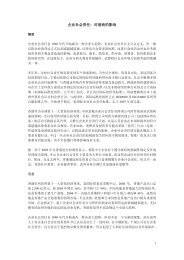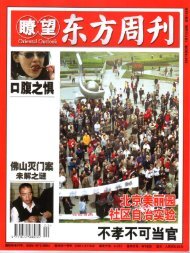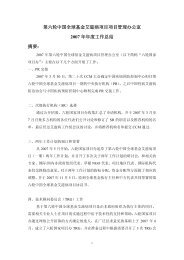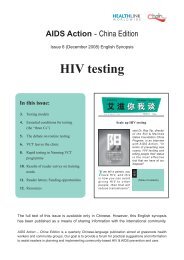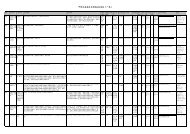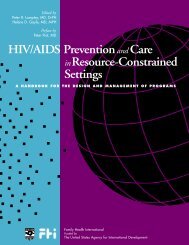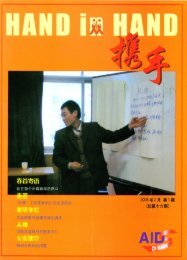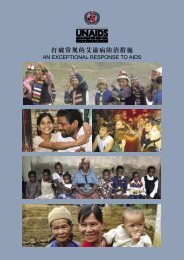The Training of Trainers Manual - UNFPA
The Training of Trainers Manual - UNFPA
The Training of Trainers Manual - UNFPA
You also want an ePaper? Increase the reach of your titles
YUMPU automatically turns print PDFs into web optimized ePapers that Google loves.
Day 2<br />
Exercise: Gender, not sex<br />
Objective<br />
To help participants understand the difference between ‘sex’ and<br />
‘gender’<br />
To recognize gender stereotypes<br />
30<br />
minutes<br />
Materials Flip chart, markers, and tape; a flip chart sheet or overhead<br />
transparency on which definitions related to sexual orientation will<br />
be outlined; Handout 6. Sex and Gender<br />
Process<br />
Draw three columns on the paper. Label the first column ‘woman’ and leave the<br />
other two blank.<br />
Also suitable for<br />
all training and<br />
field work<br />
Ask participants to identify personality traits, abilities, and roles (‘attributes’) that<br />
are <strong>of</strong>ten associated with women; these may include stereotypes prevalent in the<br />
participants’ communities. Write down their suggestions in the ‘woman’ column.<br />
Next, label the third column ‘man’ and ask participants to again make a list <strong>of</strong><br />
personality traits, abilities, and roles that are <strong>of</strong>ten associated with men. <strong>The</strong>se may<br />
include stereotypes prevalent in the participants’ communities. Write down their<br />
suggestions in the ‘man’ column.<br />
Ensure that participants provide examples related to reproductive health. Here is an<br />
example.<br />
Girls and young women:<br />
■ Are biologically more susceptible to STIs and HIV<br />
■ Are at greater risk <strong>of</strong> morbidity and mortality<br />
■ Experience higher rates <strong>of</strong> sexual violence and coercion<br />
■ Are expected to care for children<br />
■ Are unable to negotiate condom use effectively<br />
Boys and young men:<br />
■ Experience peer pressure to be sexually active<br />
■ Are taught to dominate and control<br />
■ Do not feel comfortable using reproductive health services<br />
■ Tend to avoid responsibility<br />
Section 2. Guidelines for <strong>Training</strong> <strong>of</strong> <strong>Trainers</strong><br />
67




